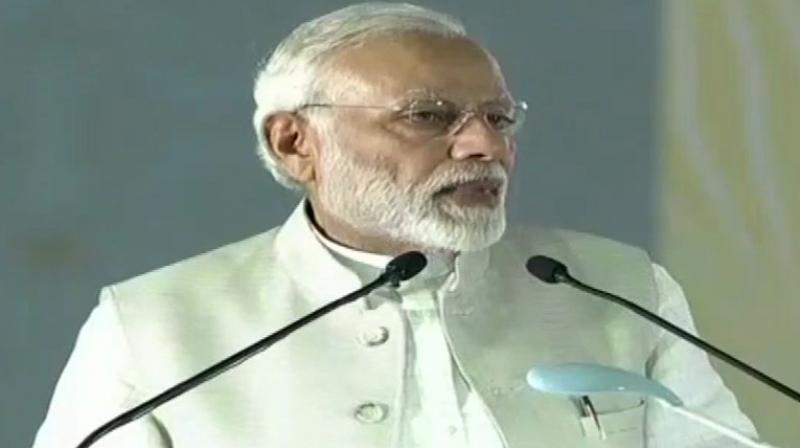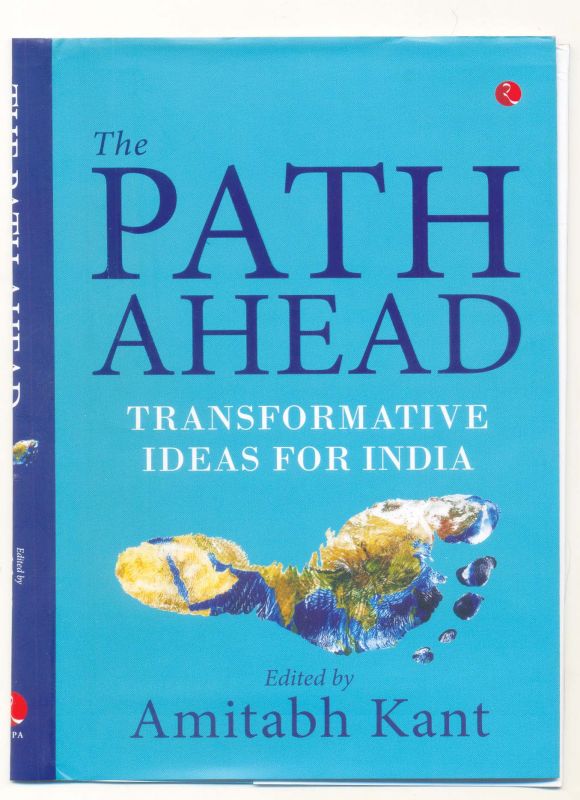Niti Aayog: PM Modi's way of rediscovering Sam Pitrodas

Chennai: This is not meant to be a compliment to the erstwhile Union Planning Commission, which the BJP-led NDA government had dramatically dismantled after the 2014 Lok Sabha polls with the stroke of a pen.
The horse galloped on the critics of the plan body’s “inefficiency”, but scrapping it was more a ruse to get rid of the ‘Left baggage’ in tackling India’s problems of poverty, illiteracy and unemployment in the post-1950 decades. It was to signify a radical break with the Nehruvian legacy of rational, centralised planning based not entirely on the Soviet model as Nehru envisaged a ‘mixed economy’.
The five-year planning process was, during the earlier Janata party rule of Morarji Desai in 1977 sent packing for a while, as a year-on-year ‘rolling plan’ was rolled out. Remember the then iconic Health Minister, Raj Narayan, spoke of “barefoot doctors” visiting the remotest villages, which only cartoonist Abu Abraham could immortalise. But 2014 seemed to unwind a new clock and calendar, with the BJP getting a simple majority of its own in the Lok Sabha.
 The Path Ahead – Transformative Ideas For India. (Edited by Amitabh Kant Rupa Publications India Pvt. Ltd, Rs 595)
The Path Ahead – Transformative Ideas For India. (Edited by Amitabh Kant Rupa Publications India Pvt. Ltd, Rs 595)
What we have for last nearly four years is a ‘Think Tank’, guided undoubtedly with the best of domain experts in a range of public policy issues, well meaning leaders of industry and academics, called the ‘National Institution for Transforming India’, in short ‘NITI Aayog’, and which the Prime Minister, Narendra Modi candidly said he was leading as ‘Captain of Team India’. In a word, ‘NITI Aayog’ is presently driving all the new concepts, models and praxis for a ‘New India’.
This volume, “The Path Ahead, Transformative Ideas for India”, edited by Amitabh Kant, present CEO of ‘NITI Aayog’, a 1980 batch Kerala cadre IAS officer, is a richly informative and thought-provoking collection of 27 essays by distinguished persons from a basket of mixed talent pool including policy makers, professors, government officials and industry experts.
It comes as kaleidoscopic reflections of the changing patterns in a new political context where being ‘right’ is ‘not wrong’. The volume ends, though, with a brilliant cautionary ‘Epilogue’ by Dr Arvind Subramanian, former Chief Economic Adviser to the Central government.
The problems are already well defined, their contours sharpened. Hence, the vision or the big picture that first defined the transformative ethos of the post-Independence decades, seems no longer relevant in the eyes of the ‘NITI Aayog’ that has positioned itself as India’s intellectual guiding star, an “Overman” so to say, over the Plan body’s remnants. Some experts though have still thought it fit to quote from earlier high quality research done at ‘erstwhile Yojana Bhavan’!
India is already a huge economy and growing, not so much by the so-called ‘Hindu rate of growth’, but fine-tuning to ambitious range of eight per cent to 12 per cent GDP growth, 27 years after the historic 1991 economic reforms. So, let us all think in terms of ‘problem solving’ and how new technology, fiscal re-engineering and hackathon intuitions can actually deliver solutions from “toilets to titling lands”. The ‘demographic dividend’ is her ace, little realising that most youngsters coming out of Indian Universities today see only the IT industry as their best bet.
Nonetheless, there is substantially more to the spirit of the new philosophy, where Start-ups and ‘Make in India’ are tempered by a ‘new confidence and cultural pride’ by whatever political label one may call it. This psychology tacitly underpins this collection of essays that could also be read as a report card of sorts of the NDA government before the 2019 general elections.
“The time is ripe for India to innovate and cement its position as one of the leading economies of the 21st century and beyond. I believe this book rises to the occasion. It will not only be a ready reference for today’s policymakers, academics and industry professionals and leaders, it will also serve as an inspiration for India’s youth and leaders of tomorrow,” says John T Chambers, Chairman Emeritus, Cisco Systems and Chairman of the US-India Strategic Partnership Forum, in a very apt and succinct foreword to this book.
The framework of the issues dwelt in this volume is clearly articulated by Amitabh Kant, who explains how “technology is reshaping the way government is designing and implementing programmes”. Whether it is ‘Direct Benefit Transfer (DBT), being implemented across 437 schemes and that has helped save Rs.83,000 crore till date to the government – though he does not say how these savings can be used to rein in runaway petrol and diesel prices - the ‘BHIM programme (Bharat Interface for Money), digitisation lowering tax collection costs, GST rollout increasing indirect taxpayers base by an amazing 50 per cent, or the ‘NITI Aayog’ working on artificial intelligence (AI) applications in a range of areas from health to education; the Think Tank is also working on “blockchain-based smart contracts which will reduce litigation, and land registry on the blockchain that will reduce corruption relating to land.” All these are a platform opening up for “Young Indians to become the makers of a New India.”
Some of the path-breaking new technologies that India can work upon are shot through several of these essays. For instance, an indigenously developed and extensively tested “low temperature Proton Exchange Membrane (PEM) fuel cell stacks”, that will have far-reaching implications in areas like power generation from renewable, green energy sources, long-range electric vehicles, defence and industrial cogneration. “The expert Committee set up by NITI Aayog has strongly advocated that Atal Innovation Mission (AIM) should be used to finance such grand challenges,” writes Dr R. A. Mashelkar, National Research Professor and former Council for Scientific and Industrial Research (CSIR) chief in his essay.
A very realistic paper on “Doubling Farmer Income: Case for Growth in Livestock Income”, by industry leader Adi Godrej points out, citing an NSS survey, how the average farm households earning in India in the period from July 2012 to June 2013, was a mere '6,491 per month; a similar NSS survey during July 2002 to June 2003 had put the earning of farm households to just Rs 2,115 per month, an indication of how a serious agricultural revival was attempted during the previous UPA regime under Dr Manmohan Singh. Now, Prime Minister Modi wants to double farm incomes by 2022. To enable the growth of the farm sector, one critical aspect to be looked into is livestock development, and the need for “highly specialized” professionals in veterinary and animal sciences, writes Adi Godrej. In fact, all the four papers on problems in Indian agriculture are an excellent study.
Similarly, the way ahead in other problem domains – from fiscal policies, the future of mobility pegged to electric vehicles given global climate challenges, the opportunities to grab and the pitfalls to avoid in urban development as cities are engines of economic growth, and the revival of special economic zones vis-a-vis Chinese model, have all been exhaustively discussed by academics and specialists, a valuable source for policy makers and leaders. Yet the book leaves one with a mixed feeling. Where is the human soul or is it wrong to ask that question?

